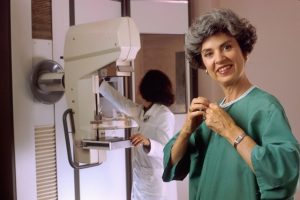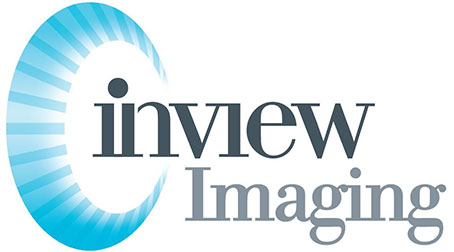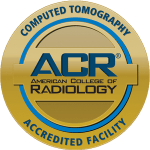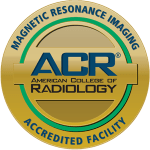Mammograms for young women in adolescence are a crucial topic that demands attention. While traditionally associated with older women, the importance of mammograms for teens, especially during adolescence, is gaining recognition in the medical community. Detecting breast abnormalities early can significantly impact treatment outcomes and overall health. By understanding the historical context of mammograms and recognizing the benefits they offer for young women’s breasts, teenagers can take proactive steps towards their well-being in adolescence. Stay informed about why mammograms matter for young women in adolescence, breasts and how they contribute to long-term health outcomes and medical surveillance.
Key Takeaways
-
Early Detection Matters: Regular mammograms for young women in adolescence can help in the early detection of any potential breast health issues.
-
Empower Teenagers: Encourage teenagers to prioritize their health by discussing the importance of mammograms and breast imaging.
-
Stay Informed: Educate yourself, your teen, and young women about the different breast imaging techniques, such as mammogram, available for early detection and monitoring.
-
Open Communication: Address any concerns or fears about mammograms with healthcare providers to ensure a comfortable experience.
-
Lifestyle Awareness: Promote healthy lifestyle habits that can contribute to overall breast health and well-being.
-
Regular Check-ups: Schedule regular mammogram appointments for breast imaging and screenings as recommended by healthcare professionals.
Understanding Breast Imaging

Imaging Modalities
Mammography, also known as a mammogram, is not the first choice for adolescent breast evaluation due to radiation exposure risks. Instead, breast ultrasound is preferred as it can effectively differentiate between cystic and solid masses, aiding in accurate diagnosis. However, breast MRI is rarely used in evaluating adolescent breast masses due to its limited necessity and high cost.
-
Pros of Breast Ultrasound:
-
Differentiates cystic from solid masses accurately.
-
Minimizes radiation exposure risks compared to mammography.
-
Indications for Imaging
Clinical presentations that warrant initiating breast imaging with ultrasound include palpable breast masses, nipple discharge, and persistent breast pain. It’s crucial not to recommend routine screening for adolescent breasts due to their developing nature. Palpable worrisome masses should prompt immediate breast imaging to rule out any underlying pathology.
-
Key indications for initiating breast imaging:
-
Palpable breast masses
-
Nipple discharge
-
Persistent breast pain
-
Common Breast Pathologies
Common pathologies encountered during adolescent breast imaging include fibroadenomas, benign breast masses, and juvenile papillomatosis. These differ from adult pathologies as adolescents are more prone to benign conditions than malignancies. Management of these pathologies involves close monitoring, biopsy if necessary, and surgical intervention in severe cases.
-
Differences in Adolescent vs. Adult Pathologies:
-
Adolescents have a higher incidence of benign conditions.
-
Adults are more likely to develop malignant breast tumors.
-
The Importance of Mammograms for Teens
Detecting Breast Abnormalities
Early detection of breast abnormalities in adolescents is crucial for timely intervention and treatment. Concerns such as lumps, pain, or nipple discharge may prompt breast imaging exams in teens. Adolescents and adults share similar worries during breast imaging evaluations, emphasizing the need for thorough assessments.
Breast abnormalities in teens can be challenging to detect due to age-related differences in breast tissue. However, prompt evaluation and diagnosis are essential to ensure timely intervention and management. Adolescents’ concerns often mirror those of adult patients, underlining the significance of comprehensive breast imaging examinations.
Benefits of Early Detection
Early detection of breast abnormalities in teens offers numerous benefits, including improved treatment outcomes and prognosis. Knowledge about pathologies that necessitate breast imaging is crucial for effective management. Timely detection allows for early intervention, leading to better patient outcomes and increased chances of successful treatment.
Understanding the importance of early detection empowers healthcare providers to offer appropriate interventions promptly. By recognizing and addressing potential issues early on, medical professionals can provide optimal care and support to adolescent patients undergoing breast imaging evaluations. Education about the significance of timely screening enhances awareness among both healthcare providers and patients.
Start Screening Guidelines
Routine screening of adolescent breasts is generally not recommended due to various factors. Mammography’s reduced sensitivity in young patients poses challenges in detecting abnormalities accurately. Instead, clinical presentations play a pivotal role in determining the necessity for further breast imaging evaluations.
While routine mammograms are not advised for teens, healthcare providers must remain vigilant for any concerning symptoms or signs that warrant further investigation. Clinical judgment plays a key role in deciding when additional imaging studies are necessary to evaluate suspected breast abnormalities thoroughly. Awareness of individual risk factors and symptoms guides healthcare professionals in providing tailored care to adolescent patients.
Teen Breast Imaging Techniques
Mammography in Adolescents
Mammography is not recommended as the first choice for assessing adolescent breast issues due to breast density. The dense breast tissue in teens can obscure potential abnormalities, leading to false negatives.
Concerns also arise regarding radiation exposure, especially in young patients. Radiation from mammograms may increase the risk of developing cancer later in life, making it a less favorable option for adolescent breast imaging.
Adolescents require specialized imaging techniques that cater to their unique physiology and breast composition. Unlike adults, teens often have denser breast tissue, necessitating alternative methods for accurate evaluation.
Ultrasound Applications
Breast ultrasound stands out as the preferred imaging modality for adolescents with breast concerns because it offers high-resolution images without radiation exposure. This makes it a safe and effective option for young patients.
Ultrasound plays a crucial role in distinguishing between cystic and solid masses in adolescent breasts. Its ability to differentiate these types of masses aids in determining whether further evaluation or intervention is necessary.
The absence of radiation exposure during breast ultrasound procedures ensures the safety of adolescents undergoing imaging studies. This non-invasive technique provides valuable insights into breast health without any associated risks.
MRI and Nuclear Options
Breast MRI is not commonly used for evaluating adolescent breast masses due to various factors, including cost and availability. However, there are specific cases where MRI may be indicated, such as when additional information is needed after initial assessments.
In certain circumstances, such as when conventional imaging results are inconclusive or when there is a strong family history of breast cancer, healthcare providers may recommend breast MRI for further evaluation in adolescents.
Nuclear medicine techniques are rarely utilized in adolescent breast imaging due to the low incidence of malignancies at this age. These modalities are more commonly employed in adult populations where there is a higher prevalence of breast cancer cases.
Addressing Common Concerns
Treatment Costs
Breast imaging modalities like mammograms may incur costs, but they are crucial for early detection. Detecting abnormalities early through imaging can reduce treatment costs significantly. Considering cost-effectiveness helps in selecting the most appropriate imaging method for adolescents.
Body Image Issues
Breast imaging can impact adolescents’ body image perception, potentially causing distress. Addressing body image concerns during imaging sessions is vital for enhancing the overall experience. Healthcare providers need to be sensitive to these issues during breast imaging procedures.
Fertility and Cancer
Breast imaging in adolescents might raise concerns about future fertility. Early detection of abnormalities enables timely intervention, preserving fertility options. It’s essential for healthcare professionals to have open discussions about fertility implications with adolescent patients undergoing breast imaging.
Closing Thoughts
Now that you understand the significance of mammograms for teens and the various techniques involved, you are better equipped to prioritize your breast health. Addressing common concerns and misconceptions can alleviate any fears you might have had about undergoing these screenings. Remember, early detection is key in successfully managing any potential health issues.
Take charge of your well-being by scheduling a mammogram if recommended by your healthcare provider. Your proactive approach to preventive care can make a significant difference in detecting any abnormalities early on. Stay informed, stay vigilant, and take the necessary steps to ensure your breast health is a top priority.
Frequently Asked Questions
Are mammograms important for teens?
Mammograms are not typically recommended for teens due to their young age and low risk of breast cancer. However, understanding breast imaging techniques and regular screenings can help detect any abnormalities early on.
How do mammograms benefit teens?
While mammograms may not be necessary for most teens, they play a crucial role in detecting breast cancer in older women. Encouraging healthy lifestyle habits, self-examinations, and awareness of breast health are beneficial for overall well-being.
What are the common concerns related to teen mammograms?
Common concerns regarding teen mammograms include exposure to radiation at a young age, emotional distress from undergoing the procedure, and unnecessary anxiety about potential findings. It’s important to address these concerns by educating teens on alternative screening methods and emphasizing prevention through healthy habits.
Should teens undergo breast imaging procedures?
For most teens without a family history or symptoms of breast cancer, routine breast imaging procedures like mammograms are not necessary. However, healthcare providers may recommend other imaging techniques or self-examinations based on individual risk factors or concerns.
How can parents support their teens’ breast health?
Parents can support their teens’ breast health by promoting open communication about body changes, encouraging self-awareness through self-examinations, fostering healthy lifestyle choices, and consulting healthcare providers for guidance on preventive measures. Early education and awareness are key in maintaining optimal breast health.


